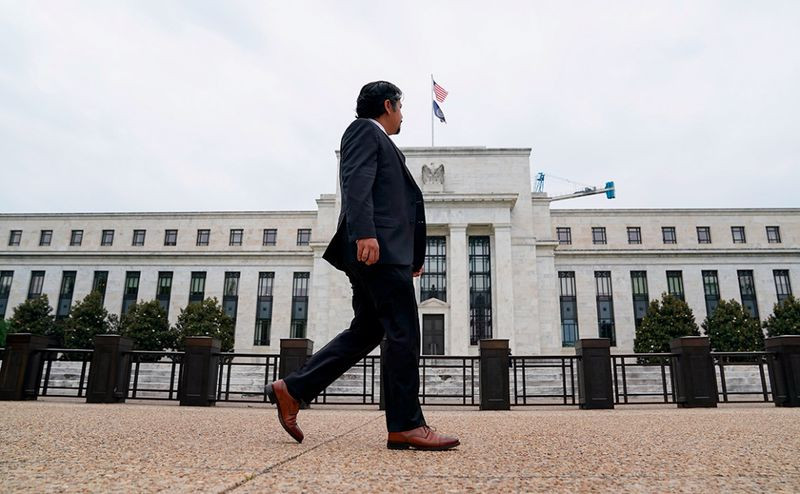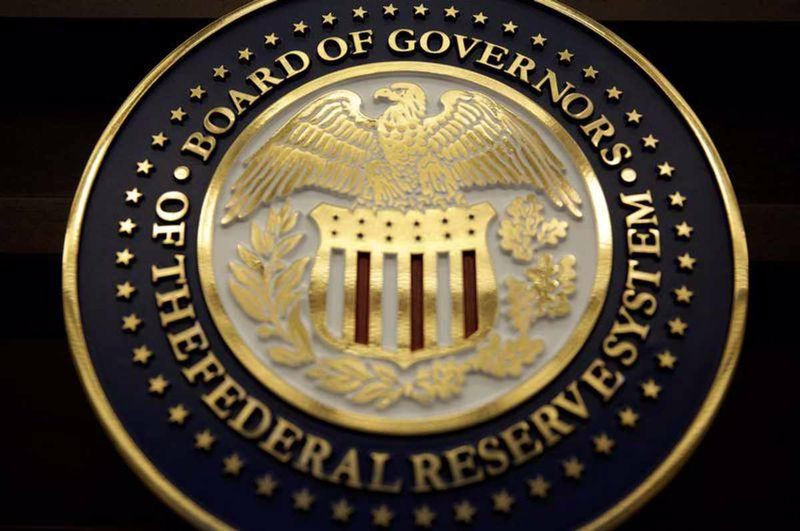
The dollar continued to lose ground against its main competitors on Thursday amid the so-called "relief rally" in global markets.
Traders followed the development of the situation around Ukraine and played back the results of the March Federal Reserve meeting.
Key Wall Street indexes rose for the third consecutive day on Thursday. Following the results of Thursday's trading, the S&P 500 rose 1.2% to 4411.67 points. At the same time, all 11 sectors closed in positive territory.
According to Albion Financial Group analysts, stock traders have been reacting more calmly to fluctuations in oil prices in recent days. More recently, oil was trading above $130 per barrel compared to the level of $90 per barrel before the start of the Russian-Ukrainian conflict. Now investors are trying to determine a new range of prices in the conditions of warfare, experts say.
"Traders have become more relaxed about the fact that interest rates are rising. Jerome Powell, the chairman of the US central bank, has been talking about this incessantly since the beginning of December. The fact that there were no significant negative surprises in the plans of the Fed following the results of the next meeting, and the comments of Powell made it clear to people that maybe things won't be as bad in the near term as we expected," said analysts at Wedbush Securities.
"This gives investors an increased level of cautious optimism, which is different from the significant pessimism that we have seen since the beginning of January," they added.
The safe haven dollar lost momentum, while risky assets gained as traders remained optimistic about the ceasefire in Ukraine.
The day before, the USD index fell to 97.75 for the first time since March 10, and the EUR/USD pair reached its highest level in more than two weeks near 1.1140.
The coordination of disputed points in the negotiations between Kiev and Ukraine on a peace treaty will take from a few days to a week and a half. This was stated on Thursday by Mikhail Podolyak, the adviser to the head of the office of the Ukrainian president.
"At the moment, both the Russian and Ukrainian delegations are standing on their positions. It may take from a few days to a week and a half to agree on the disputed points. During this time, we should get closer to drawing up a peace treaty," he said.

For the markets, the peak of concern about Ukraine has apparently been left behind, and the focus has shifted to central banks, Barclays strategists say.
"The well-known market axiom which says that sell the US dollar at the first Fed rate hike, began to gain momentum after the greenback failed to rise after the indisputably hawkish FOMC decision this week," TD Securities analysts noted.
After the central bank raised interest rates for the first time since 2018, the US currency fell and stock markets rose. Fed officials have outlined six more interest rate hikes by the end of this year.
Apparently, the fans of the dollar expected too much from the Fed, and it eventually disappointed them, which in turn led to the growth of the EUR/USD pair.
Markets dislike uncertainty most of all, and clarity about the projected path of rate hikes and the insistence of the US central bank that the national economy is strong enough to cope with a cocktail of policy tightening, higher inflation and unstable commodity prices after Russia's invasion of Ukraine have somewhat reassured investors.
"The big hurdle for the market has been uncertainty about what the Fed is going to do, and now we have a rate trajectory," said analysts at Infrastructure Capital Advisors.
Although the central bank's position has become tougher, it plans to try to organize a soft landing of the economy, and this will be quite a positive outcome for the stock markets, UBS analysts say.
Investors were enthusiastic about the fact that the Fed has begun to fight inflation. However, the pace of rate hikes may put pressure on stock indexes.
The market reaction to the FOMC's monetary policy decision turned out to be positive, but on the long-term horizon, an increase in rates threatens to cool business activity.
While money markets still expect rates to rise by 160 basis points for the rest of the year, the narrowing of the gap between the yields of short- and medium-term US Treasury bonds raises concerns that economic momentum is slowing.

"FOMC officials don't have much experience in developing soft landings," said strategists at State Street Global Advisors, who expect the US economy to contract in the first half of 2023.
If commodity prices decline, it could ease the pressure on the Fed to raise rates as much as it predicted.
So far, the central bank has to reckon with geopolitical risks. In the medium term, inflationary pressures are expected to increase due to rising energy prices and disruptions in logistics chains, which will reduce economic activity. With this in mind, the Fed revised the forecast of GDP growth and inflation in the United States for the current year from 4.0% to 2.8% and from 2.6% to 4.3%, respectively.
"The dollar seems to be reaching a peak, since the market is already largely assessing the Fed's rate hike, so the key factor in the future will be inflation: if it continues to rise, then the question will be whether the central bank's position will become even more aggressive, which may give the greenback another push up," Barclays believes.
Although the greenback seems to remain with good support in the second quarter, the single currency has most likely already reached the "bottom", say Nordea analysts, who expect to see the EUR/USD pair at 1.1300 by the end of the year.
"The main currency pair will return to the levels of 1.0800 or lower only if we get another period of serious flight from risk. Thus, we predict that EUR/USD will trade in the range of 1.0800-1.1200 in the next three months. In the second half of the year, we expect that the US economy will slow down and the dollar will come under a little pressure. Our forecast for the EUR/USD pair by the end of the year is 1.1300," they noted.
The "investment rally" on world markets on Thursday indicated that investors were looking forward, staying on the sidelines, to buy assets battered by the military conflict in Ukraine at the slightest sign of its end.
Against this background, the EUR/USD pair rose by 0.5% and came close to demonstrating the first winning week in the last six.
However, on Friday, optimism in global markets has noticeably diminished. The negative shift in market sentiment helped the US currency shake off the selling pressure and launch a counteroffensive against its competitors.
The USD index is trading today with an increase of more than 0.4%, around 98.40 points. The single currency is losing ground and retreating from recent peaks above $1.11 in the direction of $1.10.
On the eve of the weekend, there is a cooling of demand for risky assets, which signals profit-taking after the recent rally.
The S&P 500 index showed a rebound from annual lows after the next Fed meeting. However, the bulls only temporarily strengthened their positions. In the medium term, the movement of the broad market index remains downward. The same applies to the EUR/USD pair, which rose by almost 200 points after the announcement of the FOMC verdict on monetary policy, but then returned more than half of the points scored.
Investors are still keeping an eye on the US currency, which is considered a safe haven asset, due to the ongoing geopolitical risks.

The potential readiness of China to support the Russian special operation in Ukraine increases market concerns. The White House claims that they can force Beijing to pay the bills in case of direct military assistance to Moscow. This threatens to create another hotbed of tension.
At the same time, the players cling to the slightest hints of an improvement in the situation around Ukraine, believing that a bad world is better than a good quarrel.
However, in general, the situation around Ukraine remains difficult. The military special operation of Russian troops has been going on in the territory of the neighboring state for three weeks. Russia is "digesting" a record flow of Western sanctions and imposing retaliatory restrictions, which will still fully affect the well-being of the world economy.
The euro managed to recover from an almost two-year low recorded last week around 1.1806. But the eurozone seems to be at the epicenter of the problems. And it is the single currency that can take the brunt.
The fighting in Ukraine and the refugee crisis that has erupted because of them can become a heavy burden for the economy of the currency bloc, which is already struggling to maintain growth.
In addition, if Russia stops the supply of natural gas to European countries, an increase in prices for "blue fuel" could reduce the growth of eurozone GDP by 0.6%, economists at Goldman Sachs warn. In this case, the German economy may miss 0.9%.
If the "locomotive" of the eurozone gives an alarm signal, it will be difficult for investors to ignore the likely additional consequences for the entire EU economy.
Danske Bank analysts have revised their estimate for EUR/USD for 12 months from 1.0800 to 1.0500.
"Global production is slowing down, estimates show that the risks for the main currency pair are downward, and the short-term consequence of the conflict in Ukraine is likely to be a further strengthening of the US dollar. We continue to expect that EUR/USD may fall even more in these conditions, and we are revising our forecast for the pair for 12 months from 1.0800 to 1.0500," they said.
On Friday, the main currency pair sank to local lows around 1,1005. A breakdown of the 1.1000 mark may cause a deeper pullback. In case of a drawdown below 1.0970 (10-day moving average), the pair may target 1.0900 (weekly low of March 14) on the way to 1.0806 (2022 minimum of March 7).
On the other hand, the nearest resistance is at 1.1136 (the recent high), followed by 1.1245 (55-day moving average) and 1.1295 (100-day moving average).
 English
English 
 Русский
Русский Bahasa Indonesia
Bahasa Indonesia Bahasa Malay
Bahasa Malay ไทย
ไทย Español
Español Deutsch
Deutsch Български
Български Français
Français Tiếng Việt
Tiếng Việt 中文
中文 বাংলা
বাংলা हिन्दी
हिन्दी Čeština
Čeština Українська
Українська Română
Română

